Many families like to vacation near beaches, rivers or lakes and all of these have one thing in common – water! When there are large bodies of water present, we should always think of the safety of our children and our dogs. This two-part series looks at how to keep dogs and kids safe so that everyone can have a fun and safe time on vacation or on weekend trips.
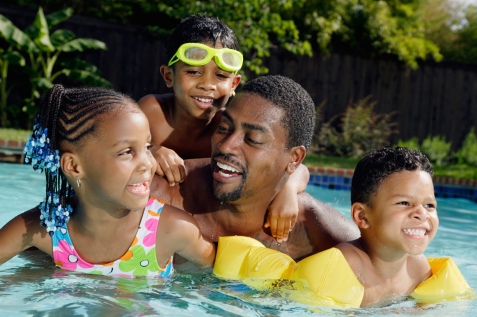
Part 1: Kids
Ideally, swimming is an activity that should be introduced when children are still infants. Many pools and community programs offer instructor-led “Mommy and Me” swim sessions that allow the babies to get used to being in the water and are great for Moms and babies to bond further.
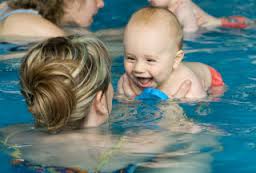
It is preferable to then progress to swimming lessons with a trained swimming instructor who can show your child the correct techniques from the beginning – it is a lot more difficult to unlearn bad habits and techniques. This type of swimming instruction is usually available on a group or an individual basis. Group sessions tend to be less expensive, but as there are more children involved there tends to be less actual swimming time. If your budget won’t stretch to professional lessons, you may want to consider teaching them to swim yourself. This does not always work, as learning to swim can be a frustrating process and sometimes kids will take instruction better from a swimming instructor than from a parent. It is also problematic if you have multiple children. If you are keen to give it a go and will be working with just one child, here are some ideas to make parent-child swimming instruction successful.
Make it a regular date
In order for parent-child swimming instruction to work, kids need to swim regularly and preferably once a week. Make a point of assigning this time in your calendar once a week and sticking to it, except when your child is sick.
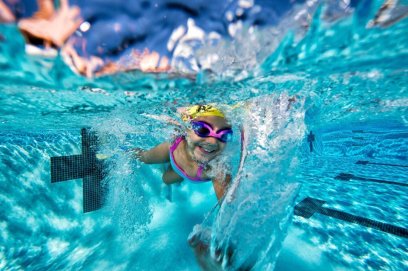
Keep it short and keep it varied
Swimming is a very tiring activity and as much as we want our kids to sleep well at night, having prolonged swimming sessions when they are learning to swim can be counterproductive. It’s far better to keep it short (15 – 20 minutes for very young and new swimmers) and to keep lesson activities varied.
Make it fun
Making the swimming lessons fun with games and other activities is crucial to keeping children engaged and in building their confidence in the water. For very young kids, use games involving nursery rhymes and plastic toys. As they get older, continue to use those techniques, but also introduce games such as “red light, green light,” (where children kick like crazy on green, slow down on amber, and stop on red) to help improve specific swimming techniques. As they get slightly older, drop the nursery rhymes and include the use of more games, varying the games from session to session.
Kids of all ages will learn better if there is variety in the lesson. If they get to use kickboards, pool noodles, and other flotation devices once in a while this will be beneficial. Using these items helps to improve stroke technique, keeps them interested, and will leave them wanting to come back for more. Not all community pools will allow their use, so check on that before taking yours along.
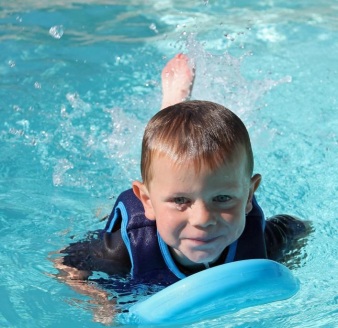
Make swimming enjoyable
Building up confidence in the water is vital so that kids are not afraid of the water and want to swim. As your little swimmer progresses in ability and confidence, you may want to think about enrolling in swimming clubs where a range of swimming and social opportunities will be offered.
Set rules
Make sure that your children know how to stay safe near a swimming pool. They must always ask for permission to go in a pool and must have adult supervision during this time. Rules such as not running by a pool are really important to follow. Use life vests or floaties for young kids when they are not actually practicing their swimming strokes, but do not rely on the floaties for safety. For young kids and those who are not strong swimmers, life vests should be worn for activities such as river floating or when in lake water. If swimming in the ocean, be conscious of the tide and possible currents. Where possible try to swim in a lifeguard supervised zone.
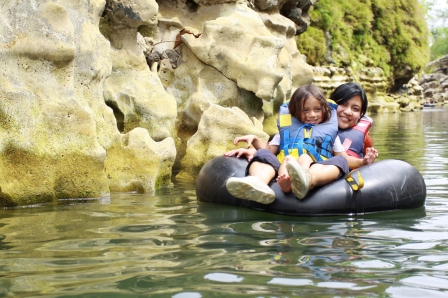
Even when your child has become a good swimmer, it is possible to get into difficulties in the water. Always ensure that children are supervised to minimize risk and ensure that you are all able to enjoy a fun and safe vacation.
Learning to swim is not a luxury, it is a necessity! Being able to swim is such an important skill to have. Swimming provides fantastic exercise for able-bodied children and those with physical challenges and is an activity that can be continued throughout their lives.
Some of my happiest and most memorable times have taken place around water with my children. What experiences have you had? We’d love to hear about them.

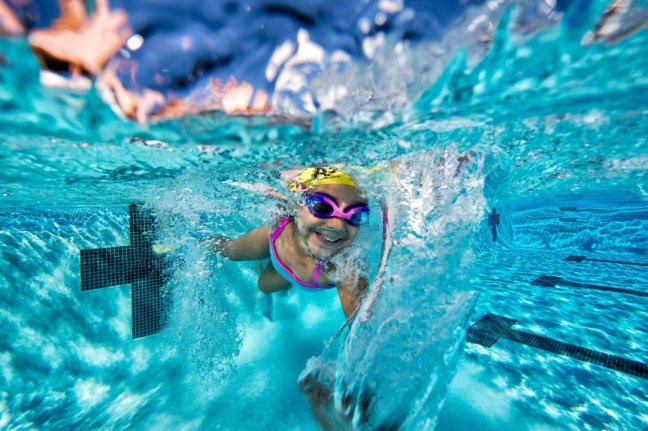
Isn’t it great quality time… family and dog all in the pool. Emma loves our water time.
LikeLike
The best times!
LikeLiked by 1 person